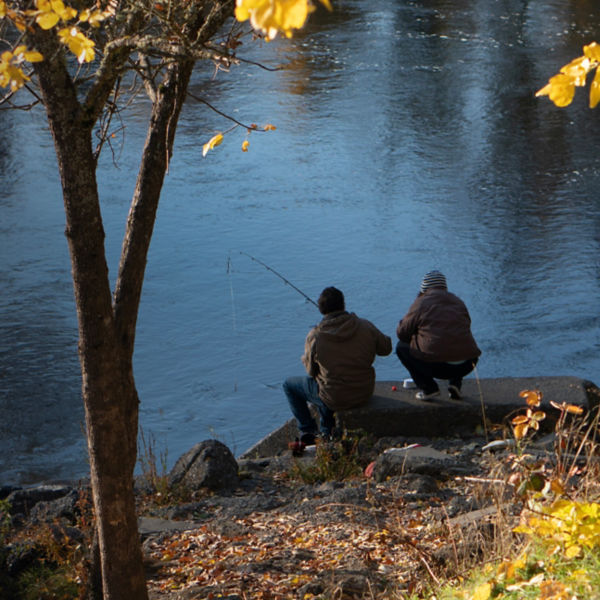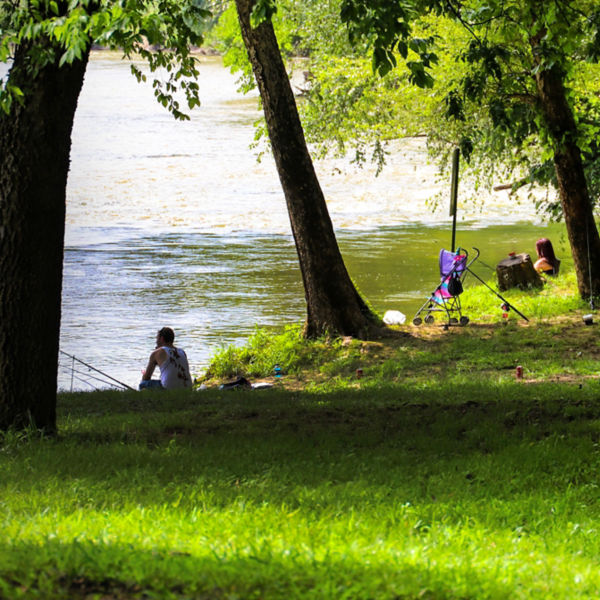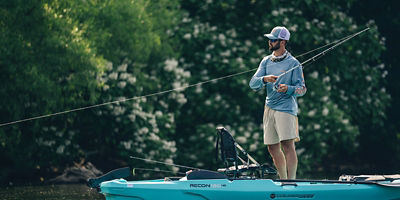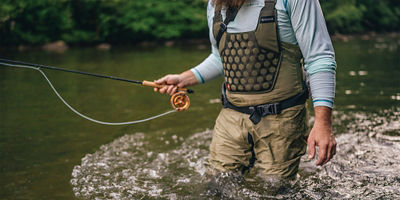
Whether it’s a relaxing pastime or professional pursuit, there’s a reason so many outdoor explorers are hooked on fishing. Or, more accurately, there are many reasons that over 50 million Americans partake, annually, in angling experiences across our nation’s waterways—from the banks of the river, on the open ocean, or the local lake, but all looking for the same thrilling tug on a cast line. Ample access to bodies of fresh- and saltwater, plus plentiful options for varying styles of fishing in every city and state: These factors only help open the sport to all. Don’t get overwhelmed, though. Make a few simple tackle considerations first (i.e., the gear to connect you to the fish), then factor accessories and other possible extras, and you’ll be ready to rig up and join in on the go-fish fun.
Rod and Reel
Choosing the proper rod and reel combination (“combos”) can be an intimidating task with so many options available. The type of fish you’re targeting and the water in which they live will help to determine the best setup. But for ease of use and for growth in the sport, a medium-action spinning combo will handle various lures and baits for the most scenarios that you’ll begin to fish.
As you level up your abilities, you’ll make deeper considerations on your rod and reel. From light to heavy and short to long, the fishing rod options are endless and can be as specific as to the lure you’re using. When choosing a more advanced reel option, determine the strength of the drag and the amount of line you’ll need on the spool.
Budget-friendly combos can range from $50 to about $150, while technique-specific combos that fill the boats of tournament anglers can range in the thousands. The most important distinction of rod and reel selection is simply to have one that you’ll use!
Terminal Tackle (Hook, Line and Sinker)
Equipping yourself with hook, line and sinker is your next step. Starting with your fishing line, you’ll first need to inspect the rod and reel you have—is it pre-spooled? If not, you have a few considerations to make: line weight, material, color and brands. As a beginner, these considerations shouldn’t be made too complicated as a clear monofilament that matches your rod and reel’s suggested line weight will suit your needs.
Regardless if you’re planning to fish with artificial lures or natural bait, then hooks, weights and bobbers are the next key components in every tackle box. Fishing hooks come in all shapes and sizes, but single, non-snelled hooks (without a leader attached to them) are a great start to hold both bait and lures. Sinkers will help get your hook and line out to its intended location while also keeping your hook underwater (an assortment of removable split shot and casting sinkers are the way to go). Lastly, floats and bobbers keep your bait in the strike zone and help to indicate when a fish has taken an interest in it—a simple snap-on float will do.
Lures vs. Bait
In most cases, it’s true that starting with a natural bait (meaning: live critters that fish normally prey on) can be a quicker path to success than an artificial lure (designed to actively court, attract and trick fish by mimicking their normal prey). But if you’re looking for more of a challenge, lures are your best bet. When outfitting your fishing kit, a mix of both options will allow for the best success.
Artificial lures come in many different forms. When narrowing down which to tie on, the best way to decide is to think like a fish: Where will the fish be and what will they eat? Many of these questions can be answered by considering the type of fish, body of water and time of year you’re targeting the fish. With categories ranging from hard and soft baits, to bladed baits, subsurface and topwater lures, the options are endless. The one thing to keep in mind when tying a lure to the end of your line: Does this imitate what a fish would typically eat?
The same stays true in choosing a natural bait, matching it with the prey that your intended target is hunting is the best way to fool them into biting your hook. As an example, a standard bait used across the country for most freshwater fish in rivers and lakes are worms. Found in most any bait shop or even in your backyard, worms will fool trout, panfish, catfish, bass and most any other freshwater dwellers. Other great natural bait options include live or cut bait like minnows, shrimp or bait fish and even household meats like chicken livers or hot dogs, which of course, can be found at any local grocer.










































































